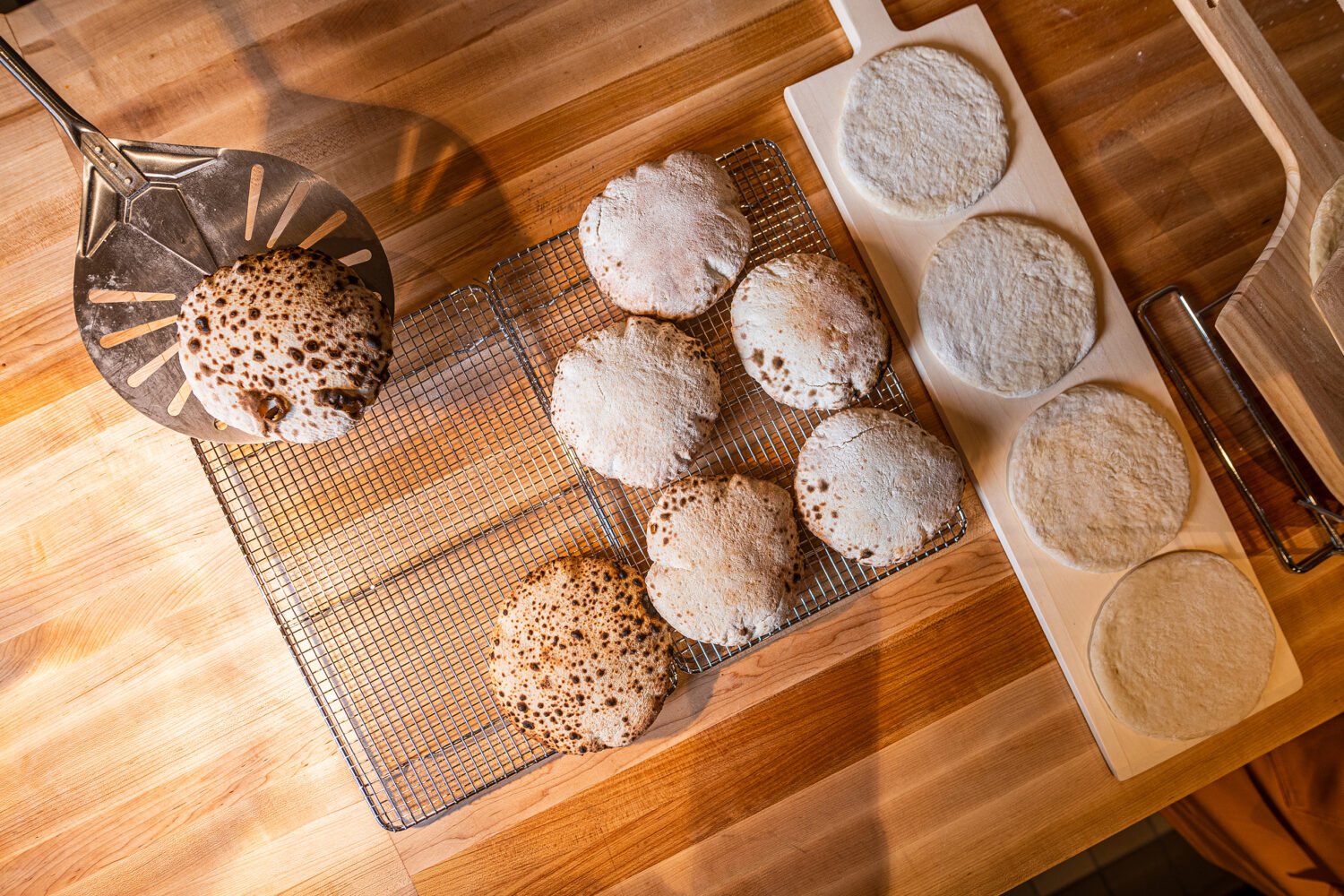You’ve almost certainly encountered a service fee tacked to the bottom of your restaurant bill lately. But chances are you still have a lot of lingering questions: Where’s the money going? Why don’t restaurants just raise their prices? Should I tip on top? We don’t blame you, it’s confusing. So we’re answering all the frequently asked questions about service fees here in one spot.
Why am I suddenly seeing service fees everywhere?
Service fees started to gain popularity among some restaurants during the pandemic as a way to provide more pay stability to staff amid the uncertainty of new variants and government restrictions. The pandemic also shed light on many of the hospitality industry’s flaws—pay disparities between cooks and servers, lack of health insurance, and the biases and discrimination baked into the tipping system. Some restaurateurs see service fees as a tool for reinventing the traditional restaurant pay model.
Ultimately, though, the reason these fees are now becoming ubiquitous—and likely here to stay—is Initiative 82, the ballot measure DC voters approved last year to phase out the tip credit system. Currently, restaurants pay servers, bartenders, and other tipped workers as little as $5.35 an hour and use gratuities to make up the rest of DC’s $17 minimum wage. Incrementally over the next five years, that lower tipped wage will increase toward one universal minimum wage. That means employers will eventually need to triple the amount they currently pay to tipped workers, and many have decided a service fee is the best way to do that. Initiative 82 started going into effect in May 2023, but some businesses are preemptively changing their business models already.
How do restaurants use the service fee?
Unlike traditional discretionary gratuities which are legally required to go to tipped workers, restaurants can use service fees however they want—so long as they disclose where the funds are going. The exact answer to this question varies from business to business. In some cases, restaurants are continuing to divvy up the funds similarly to tips. In others, they’re using the money toward higher base wages and health benefits. Or they may be combining both models. Increasingly, the money also benefits hourly kitchen workers such as cooks and dishwashers, helping to balance out the longstanding pay disparities between front and back-of-house jobs.
“The percent that goes to staff versus the business isn’t the only relevant piece of that puzzle,” says Chris Svetlik, owner of Tex-Mex restaurant Republic Cantina and Hill East Burger. “If there’s insurance, if there are higher base wages, if there are other ways that the business is choosing to compensate employees higher out of their own pocket, that’s a piece of the puzzle. It’s much easier to hear the staff don’t get the full 20-percent and get very upset. Actually, there are some models that people are playing around with that are trying to not screw over staff. In fact, you’re trying to pay them a more stable wage.”
What do tipped workers actually think about service fees?
Depends who you ask! Atal Mainali, a server and bartender at Vingt Sur Vingt wine bar on 14th Street, says he’s purposely avoided working at restaurants with a service fee model. He believes he can make more money under a traditional tipping system, and there’s a feeling of “unlimited potential” if you’re good at your job.
“If you give the right service, I feel like, lately, at restaurants without a service fee, people are genuinely tipping better,” Mainali says. “The general consensus between me and my friends in the industry is that $75,000 to $80,000 a year is very reasonable and easy to make at a full service restaurant.”
Mainali agrees that the service fee model offers a more stable income, “but if you’ve spent enough time in the industry, you balance your finances accordingly, knowing there’s going to be be slower months and when you have great months, you have to put some money away.”
Mainali believes that “the money’s going to the right people” at most smaller, independent, often higher-end restaurants with a service fee model—and he has some industry friends who are very happy at those places. But he’s found plenty of places where it’s still murky, even to workers, how the money is being carved up. “The general consensus amongst my peers is that the new model is maybe more beneficial to the business and not employee,” he says.
Felicia Colbert—now the Wine and Service Director for Capitol Hill restaurants Duck & the Peach, La Collina, and the Wells— has had a totally different experience. She started at as a server and host at Duck & the Peach after she says she went through a toxic, discriminatory experience at the Line Hotel, which led her to take a hiatus from the industry. Her current employer charges a 22-percent service fee and prides itself on paying employees fairly and equitably.
Colbert disputes the idea that service workers are making more under the traditional tipping model: “I want to see their taxes… Because I’m here to tell you even when I was making six figures in tips, I was not making more money than I was making here.”
Just as importantly, she’s found her restaurant group’s financial model breeds a culture that’s more supportive of workers. “At what dollar amount are you willing to be traumatized at?,'” Colbert asks. “We are trying to stop the ways in which people in restaurants are exploited by tipping wage.”
But Colbert adds that a service fee model can only do that when restaurants are transparent: “There are people who have reputations of exploiting their employees, and service charges are another way for them to hide that. It can be good and bad, really depending on the environment that it is being utilized in. I think the only real reason that it works for my particular organization is because we have full transparency about where those dollars are going.”
What kind of disclosures do restaurants need to make about service fees?
DC’s new attorney general Brian Schwalb recently put out a consumer alert about deceptive restaurant fees following an influx of complaints from customers. The type of fee and its amount must be “clearly and prominently” disclosed at the beginning of the ordering process—either verbally by staff or in bold print on a menu. Restaurants must also accurately describe what the fee is for. That means no ambiguous terms like “restaurant recovery” fee without explaining what specifically what it will help recover. It also means that if the fee is going toward, say, health insurance premiums, restaurants need to explicitly disclose that.
The attorney general’s guidance also says that “service fees” must go “fully and directly to service workers, unless other uses are prominently disclosed.” That’s left some confusion in the industry about who specifically is defined as a “service worker.” In response, Schwalb tells Washingtonian, “I don’t want to be quoted as giving a specific legal opinion, because each fact and circumstances could be different. I think the main thing we want to make sure is that restaurant owners disclose to their patrons with enough information, so patrons know where their money’s going.”
Businesses with deceptive fee-charging practices could be subject to penalties and fines under DC’s Consumer Protection Procedures Act.
Why don’t restaurants just raise their prices?
Most restaurateurs believe that the initial sticker shock of higher prices would ultimately be more off-putting than a fee at the end of the meal. Svetlik, of Republic Cantina and Hill East Burger, says restaurant owners have already had to increase price quite a bit over the last couple years due to rising ingredient and labor costs. “There’s a lot of fatigue that we know exists among customers. Everyone is just tired of high prices and inflation,” he says. “So I think restaurant owners are tired of being beat up on cost increases.” Svetlik adds that most diners are already accustomed to leaving a 20-percent tip, so swapping in a 20-percent service fee isn’t a huge psychological leap.
Plus, few restaurants want to be the ones raising prices when their competition is not. Monica Lee, the general manager for Mount Pleasant bakery and restaurant Elle, says it would make more sense if government regulations created an even playing field where all businesses were required to include every cost in their base prices. “If we’re the only coffee shop that has an $8 latte, then—even if we say the prices are baked in—people will be like, ‘Oh, no, no no, that’s too much. I’m going to go somewhere else,'” she says.
Why is there a service fee on my takeout order?
The restaurant is likely using the fee to help pay a higher base wage to the people cooking your food—not just those taking orders and refilling water glasses. Dupont pizza spot Boogy & Peel charges an 18-percent service fee for dine-in and a 12-percent fee for takeout. The funds go toward higher base wages for the entire staff, starting at $20 per hour, plus health, dental, and vision insurance for all full-timers. Owner Rachael Jennings says roughly two-thirds of the restaurant’s labor costs go towards back-of-house, which is why the takeout service fee is two-thirds of the dine-in fee.
“I do feel like there’s assumption that the service fee is so that restaurateurs can just be super greedy,” Jennings says. “It’s not like this is going in our pockets and padding them. It just helps us be able to provide these things that we should be doing in this industry.”
Meanwhile, Hill East Burger in Capitol Hill charges a 20-percent fee for all checks, whether they’re dine-in or to-go. Svetlik says one factor is practical technology roadblock: Some point-of-sales systems make it difficult to differentiate between various types of orders and adjust the service fee accordingly.
Svetlik says the burger joint’s 20-percent fee for takeout is “in flux,” but he does believe there’s justification for a fee on to-go orders. There’s still work that goes into prepping orders, from logistics to interacting with pick-up customers or couriers. Plus, like Boogy & Peel, Hill East Burger also uses its service fee to pay higher wages to those preparing the food. “A takeout order requires just as much work from the kitchen as a dine-in order. So from that vantage, I think it justifies the service fee,” Svetlik says.
Is the service fee taxed?
Yes. Because the money is considered revenue of the restaurant—unlike discretionary gratuity—it is subject to sales tax. The DC Council is now considering legislation to change this after a push from the Restaurant Association Metropolitan. “We think it’s a consumer measure,” says Andrew Kline, the group’s legislative counsel. He points out that a sales tax exemption would save diners 2-percent on a meal with a 20-percent service fee: “That means that someone who dines out 50 times a year, can dine out 51 times a year for the same amount of money.”
More specifically, Kline says the restaurant association is interested in creating a standardized term for these fees that, if used, would exempt restaurants from sales tax, likely for parties of 10 or less. “And in addition, it would be a safe harbor for charges that you’re somehow misleading the public in terms of what’s happening with the money,” he says. The other thing on the group’s wish list, also being considered by the DC Council: a government-funded public education campaign about changes to the tipped wage and the role of service fees. “We think given this change, it’s important that consumers, workers, everybody’s on the same page as to what it means, what’s going on,” Kline says.
How come fee amounts vary so widely?
Honestly, everyone’s still figuring out how to cope in the wake of the pandemic and Initiative 82, so welcome to the wild west of restaurant fees. Some restaurants now charge a small fee (3-percent “wellness fee” at Levantine restaurant Albi in Navy Yard, a 6.5-percent “Initiative 82 fee” at modern Chinese restaurant Queen’s English in Columbia Heights). Many more opt for 18 to 22 percent because that’s around what most people would tip anyway. Other places are trying something in the middle: Lee, the manager at Elle, says they went with a 10-percent “fair-wage charge” because the fee is treated as taxable income and they wanted to lower their tax burden. It was also important to them to preserve tipping: “I’m formerly a bartender, and I totally get it—you can make a much, much higher wage using that traditional tipping model.”
Should I tip on top?
There is no right or wrong answer here. But after soliciting thoughts from diners, owners, and employees, our takeaway is this: The majority of people don’t offer a gratuity on top of a 20-percent service fee, and the majority of restaurants don’t expect them to. That said, if you are inclined to add more for great food and service, then 5 to 10 percent is considered a nice gesture.
You can read much more about this tipping topic here.
This story has been updated to reflect new legislation introduced by the DC Council.
















